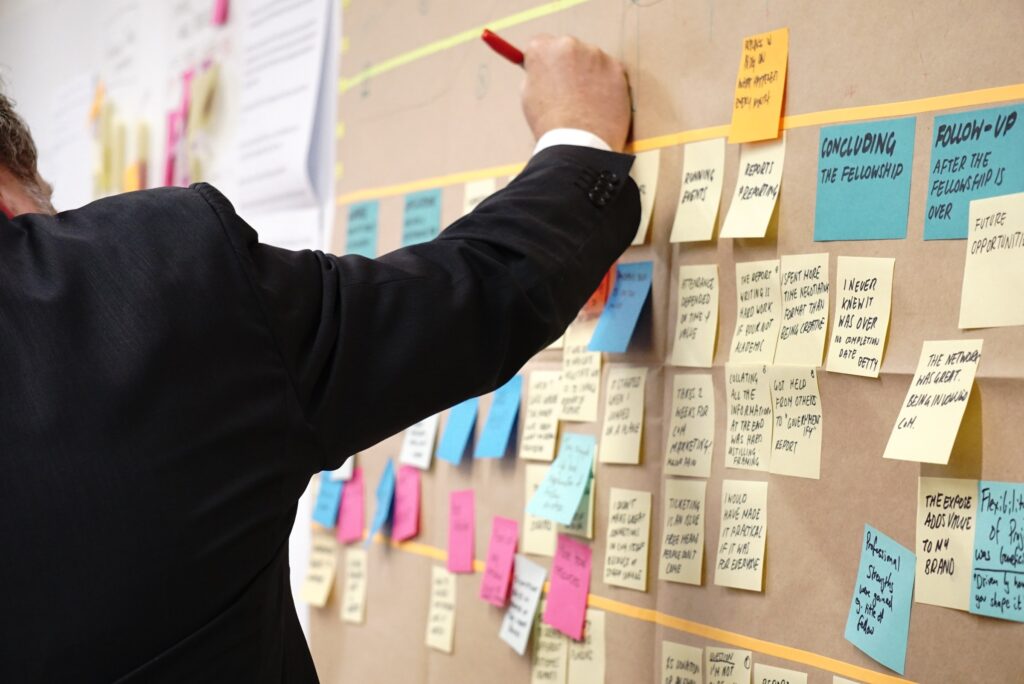Vetri Suriya - Web Developer Portfolio
Hi, I’m Vetri Suriya
Highly skilled web designer and developer with five years of experience in creating visually stunning and user-friendly websites. Proficient in front-end development using HTML, CSS, JavaScript, and jQuery, as well as back-end development using PHP, MySQL, and WordPress.
My Portfolio
Job Experience
Senior WordPress Developer
Blockwoods
● WordPress Theme & Plugin Development
● Front End Development
PHP Developer
Shrav Infotech● This company has an auction web application, the application typically includes features such as bidding history, real-time updates on bidding activity and user profiles to manage auctions and transactions. I gave a backend developer role for these features to Continuous Development.
Web Designer & Developer
S10 Healthcare Solutions Private Limited
● Developed internal (Content Management System) Web applications to support company functions such as data management, multiple organizations application under one main application etc.
● Developed cross-browser compatible, standards-compliant and responsive web pages using HTML5, CSS3, JavaScript and template scripting, according to software requirements and design specifications.
● Handle multiple projects simultaneously with continually evolving priorities.
● Coordinated various projects in a fast-paced environment, reviewed, analyzed and repaired any problems.
● Interfaced with backend data systems to produce dynamic user experiences.
● Laying out real time network graphs by using D3, Chart.js and jQuery.
● Learned system architecture and wrote how-to documentation.
● Analyzed requirements, and contributed to software requirements and design specifications for projects of significant scope.
● Developed many fundamental processes and created an internal knowledge base.
Web Developer
Redback IT Solutions Private Limited
● Designed and developed CRM & HRM applications for use within the company to reduce the cost of the company.
● Developed and designed effective marketing emails, web sites, landing pages and WordPress blogs.
● Use of Search Engine Optimization techniques during all web page development activities ensuring top page ranking in major Search Engines.
● Optimized all websites for mobile and responsive designs.
● Maintained multiple ongoing projects.
● Worked directly with clients from requirements gathering through website deployment.
Education
BE - Computer Science
Ganadipathy Tulsi’s Jain Engineering College, Vellore
High School Education
Voorhees Higher Secondary School, Vellore
Secondary School Education
Sri Venkateswara Higher Secondary School, Vellore
Recent Blogs
The Power of Gratitude: How Thankfulness Can Transform Your Self-Talk
“The Art of Self-Talk: Mastering the Inner Dialogue for a Happier, Healthier You”What we say to ourselves matters. Whether it’s

The Power of Gratitude: How Thankfulness Can Transform Your Self-Talk
“The Art of Self-Talk: Mastering the Inner Dialogue for a Happier, Healthier You”
What we say to ourselves matters. Whether it’s a pep talk before a big presentation or a soothing voice after a setback, our internal dialogue shapes our thoughts, emotions, and ultimately, our lives. Yet, most of us are unaware of the subtle art of self-talk and its profound impact. Enter the art of self-talk, a practice of consciously cultivating positive and empowering inner conversations.
Why Does Self-Talk Matter?
Imagine your mind as a garden. Negative self-talk, filled with criticism and self-doubt, is like planting weeds. They choke out healthy growth, leaving you feeling discouraged and overwhelmed. Conversely, positive self-talk, brimming with encouragement and compassion, is like nurturing vibrant flowers. They nourish your spirit, promoting resilience and optimism.
The Science of Self-Talk:
Neuroplasticity, the brain’s ability to change and adapt, supports the power of self-talk. Positive affirmations activate reward centers in the brain, releasing feel-good chemicals like dopamine and oxytocin. This chemical boost enhances self-esteem, reduces stress, and improves performance. In contrast, negative self-talk triggers the fight-or-flight response, releasing cortisol, a stress hormone that hinders learning and growth.
Transforming Your Inner Dialogue:
The good news is you can cultivate a more positive self-talk habit. Here are some key steps:
- Become aware: Listen to your inner voice. What words do you use most often? Are they supportive or critical?
- Challenge negativity: Don’t believe everything your mind tells you. When a negative thought arises, question its validity.
- Reframe self-criticism: Turn “I’m not good enough” into “I’m learning and growing.”
- Practice compassion: Speak to yourself as you would to a dear friend.
- Use positive affirmations: Repeat uplifting statements like “I am capable” or “I am worthy.”
- Visualize success: Imagine yourself achieving your goals, reinforcing positive expectations.
Remember, self-talk is a journey, not a destination. Be patient and celebrate your progress. With dedicated practice, you can master the art of self-talk, transforming your inner critic into your greatest cheerleader, unlocking your full potential for a happier, healthier you.
How to Use Lean Thinking to Improve Personal Productivity
“Streamlining Your Life: Applying Lean Thinking for Personal Productivity” Lean thinking is a methodology that focuses on eliminating waste and

How to Use Lean Thinking to Improve Personal Productivity
“Streamlining Your Life: Applying Lean Thinking for Personal Productivity”
Lean thinking is a methodology that focuses on eliminating waste and improving efficiency. It was originally developed by Toyota in the mid-20th century, but it has since been adopted by businesses of all sizes and in all industries. Lean thinking can also be applied to personal productivity. Here are a few tips on how to use lean thinking to improve your personal productivity:
- Identify your waste. The first step is to identify the areas of your life where you are wasting time and energy. This could be anything from spending too much time on social media to having a cluttered workspace.
- Eliminate your waste. Once you have identified your waste, take steps to eliminate it. This could mean setting limits on your social media use, decluttering your workspace, or delegating tasks to others.
- Streamline your processes. Once you have eliminated your waste, look for ways to streamline your processes. This could mean creating templates, automating tasks, or batching similar tasks together.
- Identify your goals. What do you want to achieve? Once you know what you want to achieve, you can start to identify the steps you need to take to get there.
- Implement Kanban. Kanban is a visual workflow management system that can be used to help you stay on track and meet your goals. It works by breaking down large tasks into smaller, more manageable tasks that are then displayed on a Kanban board.
- Implement Poka-Yoke. Poka-Yoke is a Japanese term that means “mistake-proofing.” It is a system that is designed to prevent errors from happening. Poka-Yoke can be implemented in a variety of ways, such as using checklists, color-coding, or physical barriers.
- Use Kaizen. Kaizen is a Japanese term that means “continuous improvement.” It is a philosophy of continuous improvement that aims to make small improvements all the time. Kaizen can be applied to any aspect of your personal life or work.
- Continuously improve. Lean thinking is an ongoing process. Continuously look for ways to improve your efficiency.
Here are some specific examples of how you can use lean thinking to improve your personal productivity:
- Use a to-do list to keep track of your tasks and deadlines. This will help you to stay organized and avoid forgetting important tasks.
- Prioritize your tasks and focus on the most important ones first. This will help you to make the most of your time and avoid getting bogged down in less important tasks.
- Break down large tasks into smaller, more manageable ones. This will make them seem less daunting and help you to make progress more quickly.
- Set realistic deadlines for yourself. Don’t try to do too much at once, or you’ll end up feeling overwhelmed and stressed.
- Take breaks throughout the day to avoid burnout. Getting up and moving around will help you to stay focused and productive.
By following these tips, you can use lean thinking to improve your personal productivity and achieve your goals more efficiently.
Mastering the Art of Self-Learning
“Mastering the Art of Self-Learning: A Guide to Lifelong Knowledge Acquisition” In an ever-evolving world, the ability to self-learn has

Mastering the Art of Self-Learning
“Mastering the Art of Self-Learning: A Guide to Lifelong Knowledge Acquisition”
In an ever-evolving world, the ability to self-learn has become a crucial skill. Whether you want to acquire a new skill, explore a passion, or stay competitive in your career, being a self-learner empowers you to take control of your own education. This article explores the art of self-learning, providing valuable insights and practical strategies to become an effective self-learner.
-
The Mindset of a Self-Learner:
Before diving into techniques and strategies, it’s important to cultivate the right mindset:
-
Curiosity: Embrace your natural curiosity and an eagerness to explore new subjects.
-
Resilience: Understand that self-learning can be challenging; setbacks are part of the process.
-
Self-Discipline: Develop self-discipline to stay committed to your learning goals.
-
-
Setting Clear Learning Goals:
To effectively self-learn, you need to define your objectives:
-
Specific Goals: Be clear about what you want to learn and why.
-
Measurable Outcomes: Determine how you’ll measure your progress and success.
-
Realistic Timelines: Set achievable timelines for reaching your learning milestones.
-
-
Selecting Learning Resources:
The internet is a treasure trove of knowledge, but you must choose your resources wisely:
-
Online Courses: Platforms like Coursera, edX, and Udemy offer a wide range of courses on various subjects.
-
Books: Traditional books and e-books remain valuable sources of in-depth knowledge.
-
Videos and Tutorials: YouTube, Khan Academy, and other video platforms offer tutorials on countless topics.
-
-
Creating a Structured Learning Plan:
To avoid feeling overwhelmed, create a structured plan:
-
Break it Down: Divide your learning into smaller, manageable chunks.
-
Schedule Regular Study Times: Dedicate consistent time to your learning efforts.
-
Use Learning Tools: Employ tools like calendars, to-do lists, and note-taking apps to stay organized.
-
-
Active Learning Techniques:
Active engagement with the material enhances your understanding and retention:
-
Practice and Application: Apply what you’ve learned through exercises and projects.
-
Teaching Others: Explaining concepts to someone else reinforces your understanding.
-
Seek Feedback: Ask for feedback on your work to identify areas for improvement.
-
-
Adaptability and Iteration:
Be prepared to adapt your approach as needed:
-
Evaluate Progress: Regularly assess your progress and adjust your plan accordingly.
-
Experiment with Techniques: If one method isn’t working, try another until you find what suits you best.
-
-
Networking and Learning Communities:
Connect with fellow learners:
-
Online Communities: Join forums, social media groups, or online communities related to your subject.
-
Study Groups: Form or join study groups to share knowledge and insights.
-
-
Reflection and Review:
Reflect on what you’ve learned:
-
Keep a Learning Journal: Document your thoughts, questions, and discoveries.
-
Periodic Reviews: Revisit your notes and projects to reinforce your knowledge.
-
-
Overcoming Challenges:
Self-learning may present challenges, such as procrastination or self-doubt:
-
Overcoming Procrastination: Use techniques like the Pomodoro technique or time-blocking to stay focused.
-
Dealing with Self-Doubt: Remember that learning is a journey, and setbacks are normal.
-
-
Celebrate Achievements:
Recognize and celebrate your accomplishments, no matter how small:
-
Set Milestone Rewards: Treat yourself when you reach significant learning milestones.
-
Share Your Achievements: Share your progress with friends and family who can provide encouragement.
-
Conclusion:
Becoming a self-learner is a valuable and lifelong skill. By adopting the right mindset, setting clear goals, utilizing effective resources, and maintaining a structured approach, you can embark on a journey of continuous growth and knowledge acquisition. Remember that self-learning is not just about acquiring facts; it’s about developing critical thinking, problem-solving skills, and a passion for lifelong learning.
Connect With Me

Vetri Suriya
Web Designer & DeveloperI am available for freelance work. Connect with me via email or social account.
Email: vetrisuriyar@gmail.com